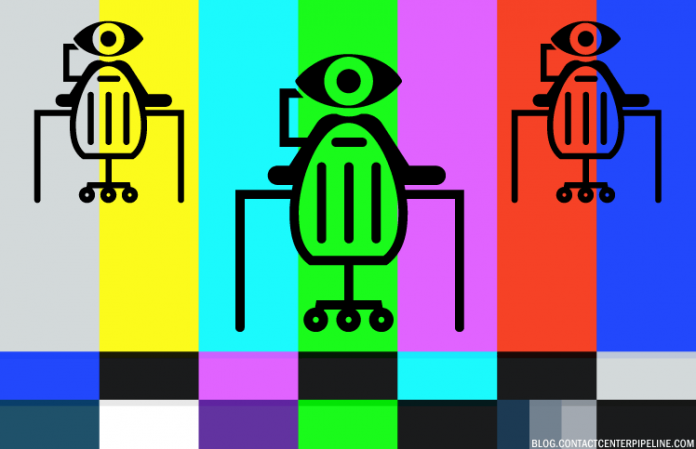
I am not one that jumps on the bandwagon every time something new comes down the pike. Given that, my take on video chat—that it can fundamentally change our contact centers—might be a surprise. Just to be clear, I am not suggesting that video chat will ever (or at least, not anytime soon) replace traditional phone calls as the most common rep-assisted channel. Nor am I saying that these substantial, fundamental changes will be felt in every contact center. My view is based on the potential impact to certain sectors, and that the effect will reach far enough to be felt throughout the contact center industry.
In today’s very nascent stages of video in the call center, we have not even completely defined how it will be delivered. Most of us naturally think of video as being two-way, but the most promoted example right now (Amazon’s Mayday) is two-way audio, but only one-way video. And we know that we can use Skype and Facetime today as our software tools, but the techies are telling us that WebRTC is how video chat will be delivered in the future… though it is not ready for prime time just yet.
From a strategic level, though, there is no need to get deeply mired in the technical details. We are close enough to know that the technology either is already or soon will be here. The bigger questions are the ones that demand attention now—how can we use it to better satisfy our customers, and what will the adoption of video mean to our contact center?
How Video Will Change Everything
Every new channel changes our contact center. They each bring along new technology, new skill sets and a greater breadth of challenges for our management teams. When we get it right, our ability to serve via these new methods of communication helps us deliver ever higher levels of customer satisfaction, and that gives the entire industry a great lift.
Video chat, though, offers more to our contact centers than any of the recent additions to our channel lineup. It can structurally change us in three very important ways:
- By bringing us contacts that we otherwise would have never served.
- By creating a more robust communication experience through the addition of a visual element we never had.
- By requiring our agents to effectively utilize non-verbal and presentation skills that we never before needed.
Any one of these three changes is significant. Taken together, they have the potential to completely alter the look, feel and operation of our contact centers.
Handling New Types of Contacts
This is the most significant factor related to video chat. With this tool, we can now migrate contacts that used to be viewed as “in-person only” to our contact centers. In other words, rather than replacing a phone call with an email or text chat, we are now on the verge of adding volume to our centers by taking away contacts that used to be handled elsewhere. The impact will be minor in some industries, and transforming in others. Here’s a brief list of some possibilities:
- Health care: Not sure if that cut needs stitches? Video chat with a nurse instead of going to the emergency room.
- Financial services: Feel better if you can actually see the person dispensing financial advice on how to invest your nest egg? Soon, many customers will identify video chat as an alternative to getting in the car and driving to an office.
- Home services: Today, we go to the store and try to describe what we want to a professional. With video chat, we can show that professional our exact issue and have a more intelligent conversation about the home care or decorating or landscaping help that we need.
- Repair/tech support: Can’t get the tech support rep to believe what your mobile phone is doing? Video chat can help you tell the story.
- Insurance: How many customers today feel that working with an agent is too inconvenient, but buying and servicing a policy from a contact center is too impersonal? Chances are, we will find out that answer within a few years when one or more of the big insurance companies starts promoting video chat as the personal, low-cost alternative.
In every case (and many others that did not make this list), we would be handling a contact that otherwise sought service elsewhere. The impact on the size of our organizations in certain sectors could be significant. Even more important, though, is the fact that we will give our customers the gift of time, while simultaneously improving bottomline results for our business.
Enjoying a More Robust Conversation
The lack of a visual element always held us back in contact centers. We have addressed it recently by adding web collaboration, but that type of help is specific to just a certain type of inquiry. Video chat can expand the use of the visual element to many other common call types, such as the following:
- “Did I fill out this form correctly?” With video chat, we can validate before sending in the form, rather than waiting a week to hear that we have to refile.
- “I followed the assembly instructions. Is it really supposed to look like this?” Video chat can improve our satisfaction with the product, not just the service.
- “I don’t understand the format of this new bill you sent me. What does this mean in the top, right-hand corner?” Video chat can help improve the customer’s ability to communicate an issue.
Yes, a number of these situations could be handled today on the web with very clear instructions (e.g., “Click here for an explanation of your new bill”). Remember, though, that your customers may not know that, and may not want to waste time getting a generic answer on the web, when what they believe they need is a detailed answer concerning their specific account.
Making the Agent Visible
For the first time in our history, we will be drawing back the curtain and letting our agents and customers see each other. That’s both exciting and frightening on many levels. Regardless of the emotions involved, there are a lot of issues that we now need to address:
- Non-verbal communication. Training, quality monitoring, coaching and a host of other processes will need to reflect the fact that non-verbal cues will be a big part of communication success. Agents with great phone skills may not enjoy the same level of success with video chat, and others who have historically struggled on the phone may prove to be stars once in front of the camera.
- Personal presentation/branding. We never worried too much about clothing and appearance in our contact centers. Now the agent’s look becomes part of our brand image, so you can bet that a whole new dress code is coming. How far will we take this emphasis on appearance? Will the agent’s physical appeal become part of the hiring equation?
- Compensation. We are asking more of our video agents… does that mean we pay them more?
These are some of the more obvious questions that must be answered, but there are many more we must anticipate and address (see the sidebar for some additional ones). Those that have already enabled video chat, and those that will do so soon, will help blaze the path toward some answers.
The Time for Planning Is Now
Video chat will not be a volume leader anytime soon, but it does not need to be big in order to be important. This is a channel that will initiate change that can truly transform the way in which contact centers operate. While the typical center may be a couple of years (or more) away from adoption, the need for planning is already upon us. It is time to open the conversation about how things in your center will change with video chat, and to start with the preparations that will make it a success.



